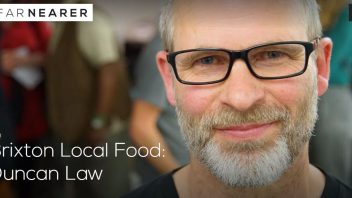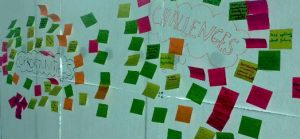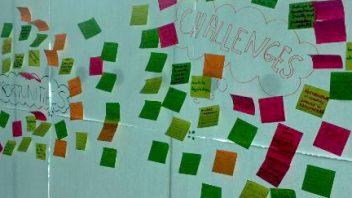Build your case for change

Why should anyone listen to you? Things to help you create a compelling story
While most people have a sense that the current economic model is not working well, many are still bought into the idea that it can recover its former levels of growth, and we’ll be more or less back to normal. That’s certainly the impression we get from most mainstream media and political commentary in the UK. Clearly in some countries this delusion is harder to maintain, as there is much more evidence of the model being in collapse, such as in Portugal, Spain and Greece.
Part of the problem is that many people and organisations do not see any option other than the return to business-as-usual (aka Plan A). So this is a great opportunity for us to lay out our case for change:
- Why the current model isn’t working – and can’t ever work – and the problems it creates; and
- The potential solutions, and the benefits this new kind of economic system can bring in financial/jobs terms, as well as social and environmental.
There are lots of great resources already available from many sources that lay out the issues. However these are inevitably generic in nature. We need to relate these general concepts and statistics to our communities in a way that brings local issues to life, and gets the attention of those with the remit and resources for local economic development.
We suggest that building a case for change that articulates the overall problems and solutions, but is also embedded in your local place using relevant data and stories about your specific situation, will help begin to shift the thinking by showing there is a viable Plan B. This can be used to present an economic case in familiar language, that is, in terms of markets and jobs, that will fall more readily on willing ears.
In terms of solutions, here we are really talking about a combination of things… community economic development, re-localising supply chains, financial transformation, reducing material and energy consumption, addressing land ownership and ‘rent’ issues, implementing full cost pricing, alternative means of exchange and so on. It means starting new enterprises as well as helping existing ones to transform, and also enabling change in the system in which they operate. This is an enormous scope and it’s unlikely you’ll want to take it all on at once.
Each of the example Leadership projects presented in the Primer Introduction take a different approach, and operate at a different geographic scale (the question of what’s the right scale for this work is a live one, and we plan to draft some guidance notes for this which will be linked here when they are available). The outputs are aimed at different audiences too.
For example, the Economic Evaluation process has focused on making the case for changing the local food, renewable and retrofit sectors, by using public economic data to show where money is currently spent. It explains ‘why it matters where we spend our money’. It then estimates the size of opportunity for each of these sectors, and lays out the case for place-based, community-led economic development, including a number of potential projects and activities that will help to make some of the systemic shifts. The final report is aimed at local organisations and businesses, not the general community (but engaging the wider community is one of the planned activities, it just wouldn’t be done using this type of report).
Transition Colorado’s Foodshift project takes a similar approach in that is uses economic data to estimate the potential jobs in a relocalised food sector at local, district and state level.
Your case for change does not need to cover everything in your local economy or be 100% accurate to the nth degree – we suggest you are looking to produce credible, indicative figures that will open people’s eyes to the opportunities available locally, if using community-led economic development as an approach. You are showing there’s potential for new enterprises and jobs, and these can bring social and environmental benefits too. We recommend sticking to the economic arguments, and not trying to bring in the full Transition story or other projects – there are probably other parts of your group already working to do this.
Things to get you started
- Background on why we need a new kind of economy and new types of enterprises
- See how the examples in the Primer Introduction make their case for change, including this video about Economic Evaluations
- Your local council will have an economic development strategy on their website – how might you work with them?
Strengthening
- Understanding economics & new economics – build your confidence in discussing the main issues
- Here’s some good evidence from Localise West Midlands of the benefits of Mainstreaming Community Economic Development.
- Community Economic Development – tools and support from CED Canada







Connect